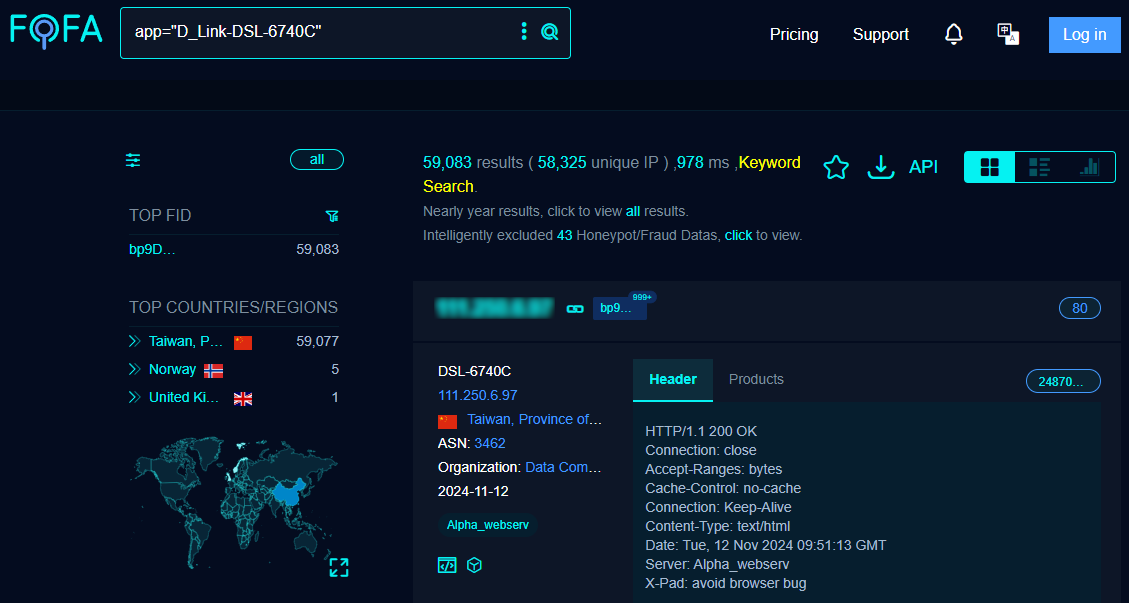Tens of thousands of exposed D-Link routers that have reached their end-of-life are vulnerable to a critical security issue that allows an unauthenticated remote attacker to change any user's password and take complete control of the device.
The vulnerability was discovered in the D-Link DSL6740C modem by security researcher Chaio-Lin Yu (Steven Meow), who reported it to Taiwan’s computer and response center (TWCERTCC).
It is worth noting that the device was not available in the U.S. and reached end-of-service (EoS) phase at the beginning of the year.
In an advisory today, D-Link announced that it won't fix the issue and recommends "retiring and replacing D-Link devices that have reached EOL/EOS."
Chaio-Lin Yu reported to TWCERTCC two other vulnerabilities, an OS command injection and a path traversal issue:
The three flaws issues are summarized as follows:
- CVE-2024-11068: Flaw that allows unauthenticated attackers to modify any user’s password through privileged API access, granting them access to the modem’s Web, SSH, and Telnet services. (CVSS v3 score: 9.8 “critical”).
- CVE-2024-11067: Path traversal vulnerability allowing unauthenticated attackers to read arbitrary system files, retrieve the device’s MAC address, and attempt login using the default credentials. (CVSS v3 score: 7.5 “high”)
- CVE-2024-11066: Bug enabling attackers with admin privileges to execute arbitrary commands on the host operating system through a specific web page. (CVSS v3 score: 7.2 “high”)
A quick search on the FOFA search engine for publicly exposed devices and software shows that there are close to 60,000 D-Link DSL6740C modems reachable over the internet, most of them in Taiwan.

Source: BleepingComputer
TWCERTCC has published advisories for four more high-severity OS command injection vulnerabilities that impact the same D-Link device. The bugs are tracked as CVE-2024-11062, CVE-2024-11063, CVE-2024-11064, and CVE-2024-11065.
Although the number of vulnerable devices exposed on the public web is significant, D-Link has made it clear in the past [1, 2] that end-of-life (EoL) devices are not covered by updates, even when critical bugs are concerned.
If users can't replace the affected device with a variant that the vendor still supports, they should at least restrict remote access and set secure access passwords.
Hope you enjoyed this news post.
Thank you for appreciating my time and effort posting news every day for many years.
2023: Over 5,800 news posts | 2024 (till end of October): 4,832 news posts
RIP Matrix | Farewell my friend ![]()



3175x175(CURRENT).thumb.jpg.b05acc060982b36f5891ba728e6d953c.jpg)
Recommended Comments
There are no comments to display.
Join the conversation
You can post now and register later. If you have an account, sign in now to post with your account.
Note: Your post will require moderator approval before it will be visible.